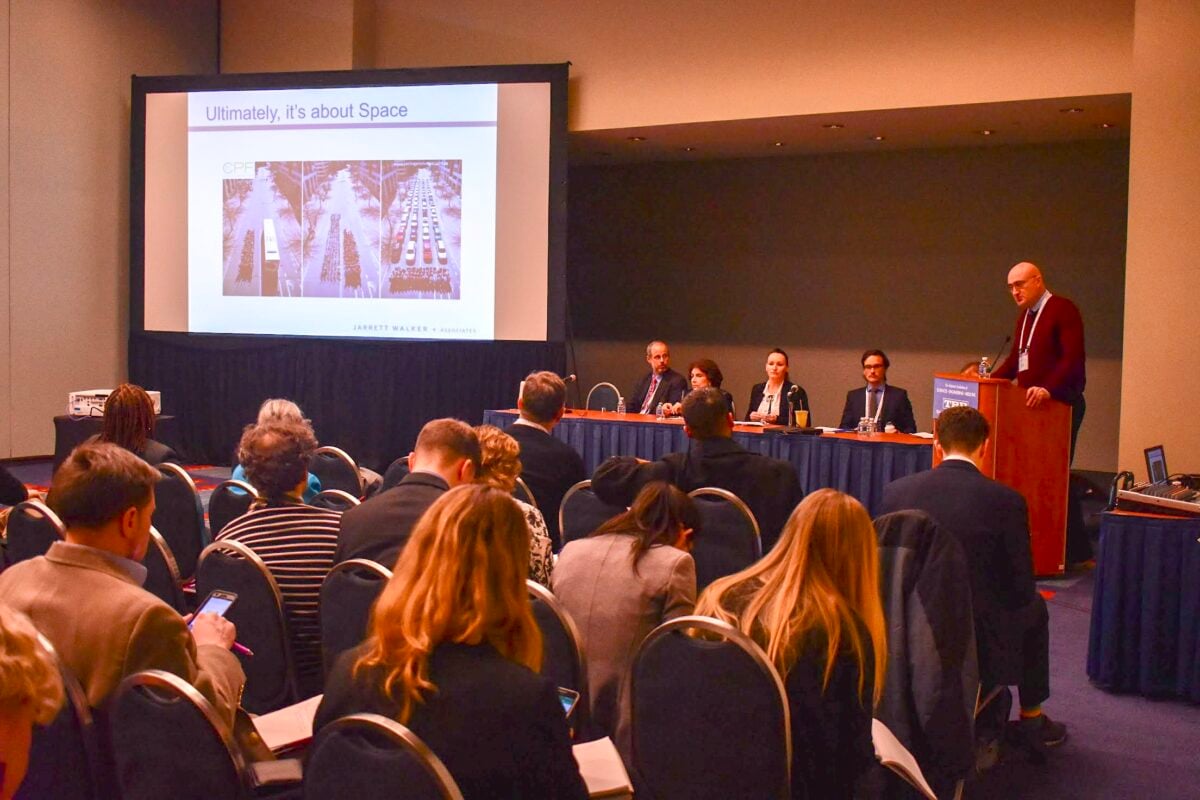
(Photos: Aaron Brown)
As we shared yesterday, BikePortland correspondent Aaron Brown is at the Transportation Research Board Annual Meeting in Washington D.C. thanks to a funding partnership with the Transportation Research and Education Center at Portland State University. Here’s his first dispatch…
Jarrett Walker: Geometry of the City
“When we get excited about [a new form of transportation] that won’t scale, we’re basically getting excited about something that will only be for the rich.”
— Jarrett Walker at TRB
Considering his international profile and impressive career consulting for cities across the planet, Jarrett Walker keeps a relatively low profile in Portland. You may have read his book, Human Transit, or you might have heard his name come up a few times after Elon Musk called him an “idiot” on Twitter (which, in my book, is the most rarefied of compliments).
Walker’s presentation, titled “The Geometry of the City,” spoke to how to best match the efficacies of public transportation with the need to provide service to address unmet needs in underserved communities.
With characteristic simplicity and clarity, Walker explained the basic ingredients that make transit function most effectively – having dense, walkable destinations all located along a linear line that can be served with frequent, reliable service. The spatial dynamics of this sort of transit-oriented community allow for a community to continue to grow while only adding marginal additional costs in mobility. Auto-centric growth on the other hand, is enormously space-intensive (just look at how much urban space is taken up by freeways and parking lots) and therefore “scales” poorly. This will be true, Walker points out, of any auto-centric transportation system, whether the vehicles run on gas or electricity, and whether they’re driven by humans, source code, or robots.
Advertisement
While other presentations in the panel were focused on specific tricks to make TNCs (transportation network companies like Uber and Lyft) and other mobility services more available to low-income individuals, Walker instead advocated for building as many effective, dense, transit-connected communities so that transit would be available to a larger number of people.
From Walker’s perspective, the best way to ensure that public transit can service low-income communities is to to build a transit system (and corresponding land-use plan) that makes transit as efficient as possible – doing so means that it’ll only be easier to “scale-up.” “Only an idea that scales is an idea that can be delivered to everyone,” Walker concludes. “When we get excited about [a new form of transportation] that won’t scale, we’re basically getting excited about something that will only be for the rich… We owe it to our children to try to not build unjust landscapes anymore.”
Climate Change
Norway is on pace to reduce transportation-related carbon emissions to 50% of their 2005 levels by 2030, and has done so by pricing carbon and massive investments in transit and biking in urban cores…
Perhaps I’m just paranoid, but I spend a lot of time thinking about how the Intergovernmental Panel on Climate Change (IPCC) recently put out a report saying that our society has 11 years to fundamentally decarbonize to stave off horrific, destructive climate change. It’s mind-boggling to process the degree to which our planet might be inhospitable for basic human life in as little as a decade, and even more so to ask how institutions are evolving to prevent this from happening or mitigate the most negative of consequences.
With that warm thought looming in my head, I attended the “Decarbonizing Transportation: Current Efforts and Ongoing Needs (for the #1 Source of GHG Emissions in the US)” session. While the presentation from the American speakers in Rhode Island and Columbus were heartening, it was depressing to compare them to the presenter from Norway.
Norway is on pace to reduce transportation-related carbon emissions to 50% of their 2005 levels by 2030, and has done so by pricing carbon, massive investments in transit and biking in urban cores, and moving quickly to electrify the existing automobile fleet. Oregon isn’t doing any of that.
President Trump’s Transportation Secretary Elaine Chao spoke at the conference, and while I didn’t see her presentation, it sounds as though she didn’t mention climate change once. Instead, she spoke about the bright new future in drone delivery service. Yikes!
Bicycle Transportation Committee
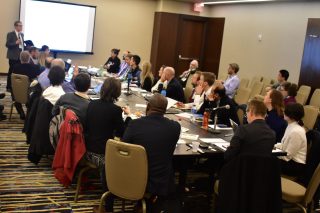
There are so many glitzy presentations, gimmicky PR stunts (I saw a bizarre-looking autonomous vehicle driving around), and hob-nobbing receptions throughout the conference that it’s easy to forgot the logistical work underway at the literally hundreds of committees and subcommittees that meet at TRB. These committees are where a lot of the “work” of TRB takes place — academics discuss trends in scholarship, prioritize topics that need to be funded for further research and inquiry in the future, and help set agendas that indirectly, yet inevitably, guide where research funding goes.
On the recommendation of Dr. Tara Goddard (a former Portlander and Portland State University alum), I sat in on the second half of the Standing Committee on Bicycle Transportation to round out my Monday afternoon. Dr. Goddard sits on the committee and noted that the amount of research on bicycle transportation has grown exponentially in recent years — scholars are now studying everything from the width of bike boxes, a racial equity lens to bike infrastructure planning, and cycling’s impacts on public health.
As scholars push the boundaries o scholarship to undertake increasingly intersectional studies of transportation and climate change, affordable housing, public health, and equity, these committees are the spaces where this work will be greenlit, funded, and promoted.
Of little surprise, then, to see the Portland Bureau of Transportation’s very own Peter Koonce (head of the agency’s Signals, Streetlights and Intelligent Transportation Services (ITS) division) swing by the hearing. Koonce gave an overview of the National Association of City Transportation Officials (NACTO) ongoing research and how it relates to the Bicycle Transportation Committee.
Stay tuned for more from TRB. Follow me on Twitter for more updates.
— Aaron Brown, @ambrown on Twitter
Special thanks to TREC at PSU for making this coverage possible.
Views expressed by the author are his own and do not reflect those of TREC at PSU.
Never miss a story. Sign-up for the daily BP Headlines email.
BikePortland needs your support.


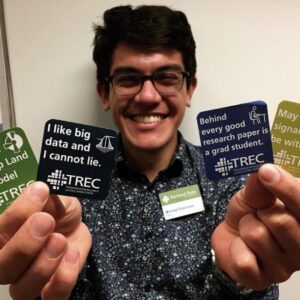

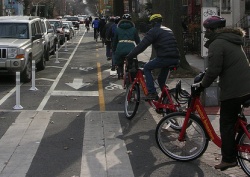
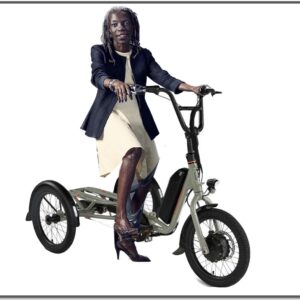
Thanks for reading.
BikePortland has served this community with independent community journalism since 2005. We rely on subscriptions from readers like you to survive. Your financial support is vital in keeping this valuable resource alive and well.
Please subscribe today to strengthen and expand our work.
Thanks for this great reporting, Aaron. Important stuff, and I very much appreciate the filter you’ve applied to which sessions you are attending.
On Jarrett Walker’s point about scale, I’d agree. It is a very useful lens to apply when thinking about our (shrinking) transportation options. But transit is or should be less of a focus than biking and walking. While important—and better than the private auto, Randall O’Toole notwithstanding—it suffers from some crucial and inherent limitations we should never lose sight of. It cannot provide the point-to-point service that most other modes (skateboarding, biking, roller blading, walking, driving) offer, and utilizing the fleet is always hampered by the uneven distribution of the demand for transport services across the day and night and week. It also requires fossil fuels and heavy public investment, which may well be justified in some cases, but we should—more than we do—compare those investments against investments in human powered modes that don’t require those compromises, suffer from those limitations.
I look forward to the remaining dispatches.
combis/colectivos provide something very close to point-to-point service. however, because they interfere with low-occupancy vehicle travel (passengers entering/exiting cause “delays” ) USAnians have been hostile to this more equitable form of public transit.
This report assumed greenhouse gas emissions would plateau or decrease in 2017 and 2018. Those estimates were laughably wrong and global GHG emissions increased both years. Moreover, our society (e.g. the USA) saw one of its largest biennial increases in GHG emissions in over a decade — ~5%.
http://www.world-crisis.com/images/uploads//car_lemmings.jpg
Ironic that the nation most in denial of climate change is getting smacked hardest by climate change. Extinction event? Better take advantage of life while you can.
Good point – why, there are still some people in this country who think it’s acceptable to fly in a carbon-spewing jet aircraft to and from Atlanta to watch a soccer game.
That isn’t really true. Climate change will impact the poorest populations on the globe, because they don’t have the wealth to mitigate the effects or move.
If I had to pick a single nation that will be most impacted, I would choose The Maldives.
https://www.newscientist.com/article/2125198-on-front-line-of-climate-change-as-maldives-fights-rising-seas/
My opinion of Jarrett just went up a notch.
Person A: Presents well-reasoned if perhaps incomplete analysis of Person B’s argument.
Person B: One word insult.
I look back at my time in Taiwan fondly. It’s a dense place. The majority of the country runs on a north to south axis with the primary city of Taipei being the north terminus and the 2nd city of Kaohsiung being the south terminus. By high speed rail they are 1 hr. 45 min. minutes apart. However, if you want to drive it is 3 hr. 45 min. plus tolls. Once you are in either city you have subways with seamless connections from the high speed rail terminals.
This is what the NW should strive towards, we have a city hierarchy which is fairly linear from Vancouver, BC – Seattle – Portland – Salem or Eugene (if needed). High speed rail would be fantastic. I’ve personally run up and down I5 time after time pissed off that Bolt bus and Amtrak are so slow. HSR would be perrrrfect between these cities.
Once you arrive they each have decent enough local transit to make journeys easy. The icing on the cake is that the cities are also bike friendly. Throwing your bike on the train to the bus is seamless.
I know that I’d be more willing to visit the other cities and spend my money if this were the case.